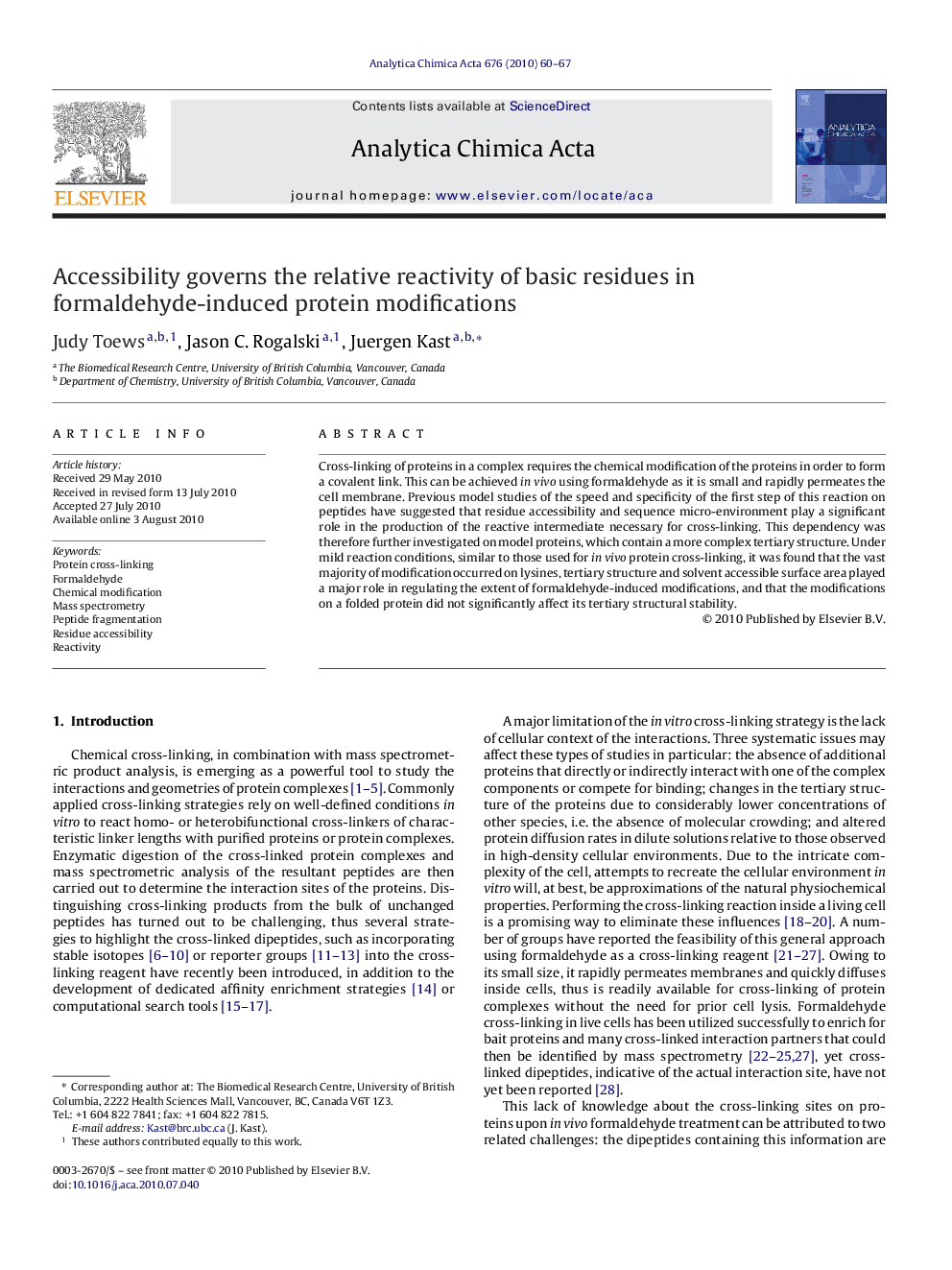| Article ID | Journal | Published Year | Pages | File Type |
|---|---|---|---|---|
| 1167270 | Analytica Chimica Acta | 2010 | 8 Pages |
Cross-linking of proteins in a complex requires the chemical modification of the proteins in order to form a covalent link. This can be achieved in vivo using formaldehyde as it is small and rapidly permeates the cell membrane. Previous model studies of the speed and specificity of the first step of this reaction on peptides have suggested that residue accessibility and sequence micro-environment play a significant role in the production of the reactive intermediate necessary for cross-linking. This dependency was therefore further investigated on model proteins, which contain a more complex tertiary structure. Under mild reaction conditions, similar to those used for in vivo protein cross-linking, it was found that the vast majority of modification occurred on lysines, tertiary structure and solvent accessible surface area played a major role in regulating the extent of formaldehyde-induced modifications, and that the modifications on a folded protein did not significantly affect its tertiary structural stability.
